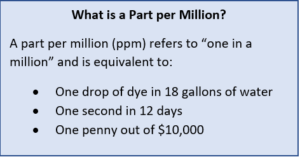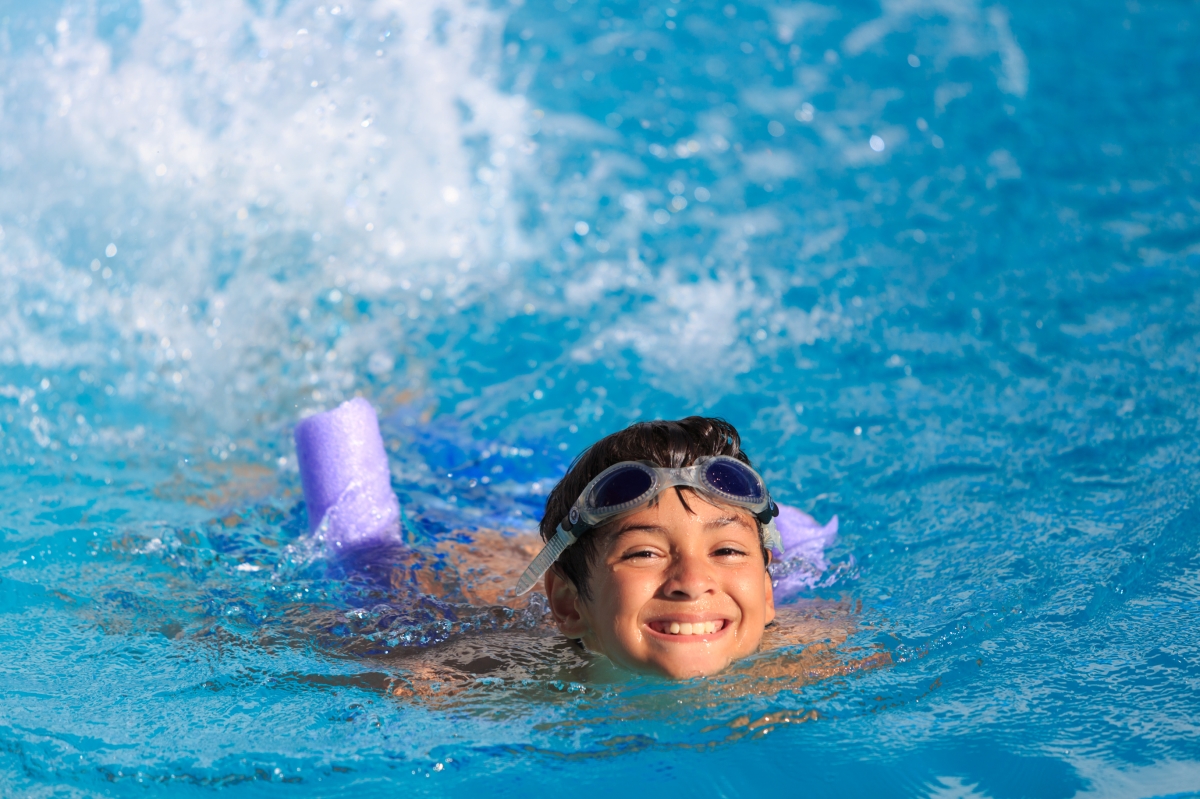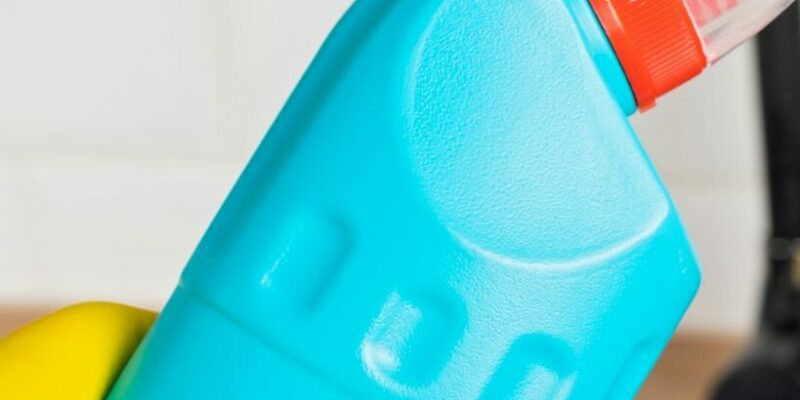Chloramines result from the combination of chlorine disinfectants and the perspiration, cosmetics, and urine that enter pools on the bodies of swimmers. Chlorine disinfectants are added to pool water to destroy germs that can give swimmers diarrhea, swimmer’s ear and athlete’s foot. Perspiration, oils and urine are unwanted additions to pool water. By showering before entering the pool to wash these substances from the skin, swimmers can help minimize pool smell.
The Chemistry of Pool Smell
 When chlorine disinfectants are added to water, they unleash two chemicals that help destroy waterborne germs: hypochlorous acid and hypochlorite ion. These two chemicals are known together as “free available chlorine” or FAC. Pool operators manage the FAC level of pool water for the safety of swimmers. Their challenge comes from the fact that FAC is reduced when it reacts with perspiration, oils and urine from swimmers to form chloramines.
When chlorine disinfectants are added to water, they unleash two chemicals that help destroy waterborne germs: hypochlorous acid and hypochlorite ion. These two chemicals are known together as “free available chlorine” or FAC. Pool operators manage the FAC level of pool water for the safety of swimmers. Their challenge comes from the fact that FAC is reduced when it reacts with perspiration, oils and urine from swimmers to form chloramines.
One way that chloramines are formed in pool water is by the reaction of hypochlorous acid with ammonia, a component of sweat and urine. Three chemical reactions can occur when hypochlorous acid reacts with ammonia, each involving the replacement of hydrogen ions with chlorine ions. When one of ammonia’s hydrogen ions is replaced with chlorine, monochloramine is formed. Replacing one more hydrogen ion with chlorine produces dichloramine. It is also possible to replace all three of ammonia’s hydrogen ions with chlorine to form trichloramine, also known as nitrogen trichloride.
Monochloramine is sometimes intentionally added to water because it is actually a useful water disinfectant. Drinking water, for example, is sometimes purified with monochloramine. Dichloramine and especially trichloramine are the chloramines most responsible for pool smell. Showering before entering the pool can help to minimize the formation of these two chloramines.
Managing Chlorine in the Pool
 As FAC combines with ammonia to form chloramines, the FAC of pool water is reduced. Lowering the FAC leaves less chlorine in the pool to destroy germs. The amount of chlorine that is “tied up” in chloramine compounds, and is therefore unavailable as free chlorine, is known as combined available chlorine (CAC). [The sum of FAC and CAC is known as the total chlorine (TC).]
As FAC combines with ammonia to form chloramines, the FAC of pool water is reduced. Lowering the FAC leaves less chlorine in the pool to destroy germs. The amount of chlorine that is “tied up” in chloramine compounds, and is therefore unavailable as free chlorine, is known as combined available chlorine (CAC). [The sum of FAC and CAC is known as the total chlorine (TC).]
The Pool and Hot Tub Alliance suggests FAC concentrations in pool water should remain in the range 1.0 – 4.0 parts per million for chlorine to work effectively (FAC should never fall below 1 part per million). CAC levels should be less than 0.2 parts per million. Pool managers can use test kits to measure both FAC and TC.
Minimizing Pool Smell
Swimmers with reddened, irritated eyes have been known to complain that “there is too much chlorine in the pool.” However, when pool water is irritating, it can mean there is not enough chlorine in it.
A well-managed pool should not have an odor. Chloramines, which are responsible for pool smell, can be eliminated using chlorine. “Shock treatment” or “superchlorination” is the practice of adding extra chlorine to pools to destroy ammonia and the organic compounds that combine with chlorine to make chloramines. To effectively destroy chloramines through shock treatment, the pool water FAC concentration must be about ten times the CAC.
Pool Rules
Properly disinfected pool water is a must for the health and safety of swimmers. Pool managers have the responsibility to adjust the pool water chemistry to reduce the risk of infection for swimmers.
This checklist is another way swimmers can help determine whether a pool is safe for swimming:
- Does the pool water look clear and blue? You should be able to see through the water down to the drain or stripes painted on the floor of the pool. Don’t go in the pool if the water is cloudy and colored because there may be algae in it.
- Don’t go in the pool if the pool wall around the water line feel slimy. There are probably germs living on the wall.
- Don’t go in the pool if there is a strong chemical odor around the pool. If there is a strong chemical odor, the pool manager may need to treat the water.
To do your part to help keep the pool clean, remember to shower before entering the pool to remove the substances that can help form chloramines, and encourage young children to take regular bathroom breaks.


